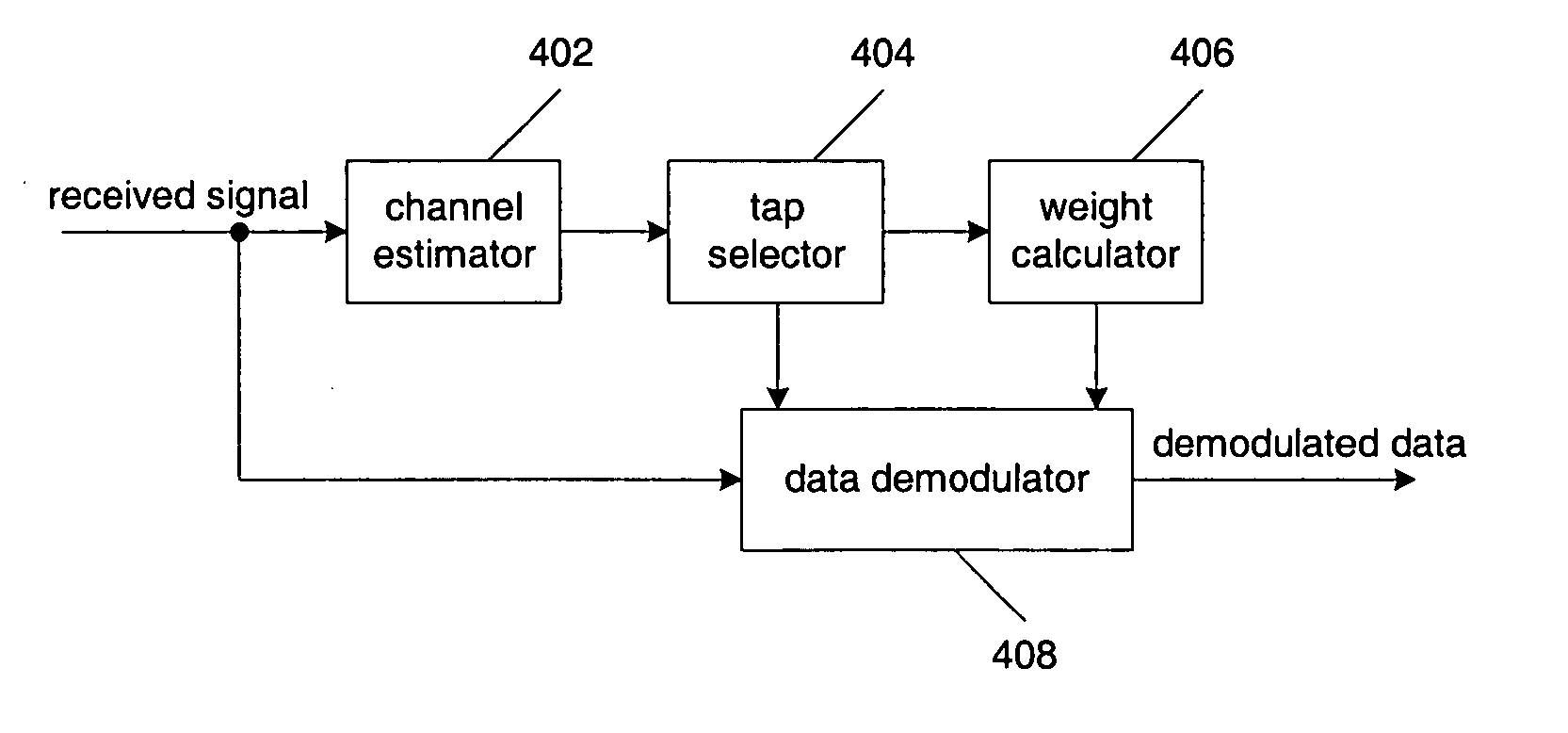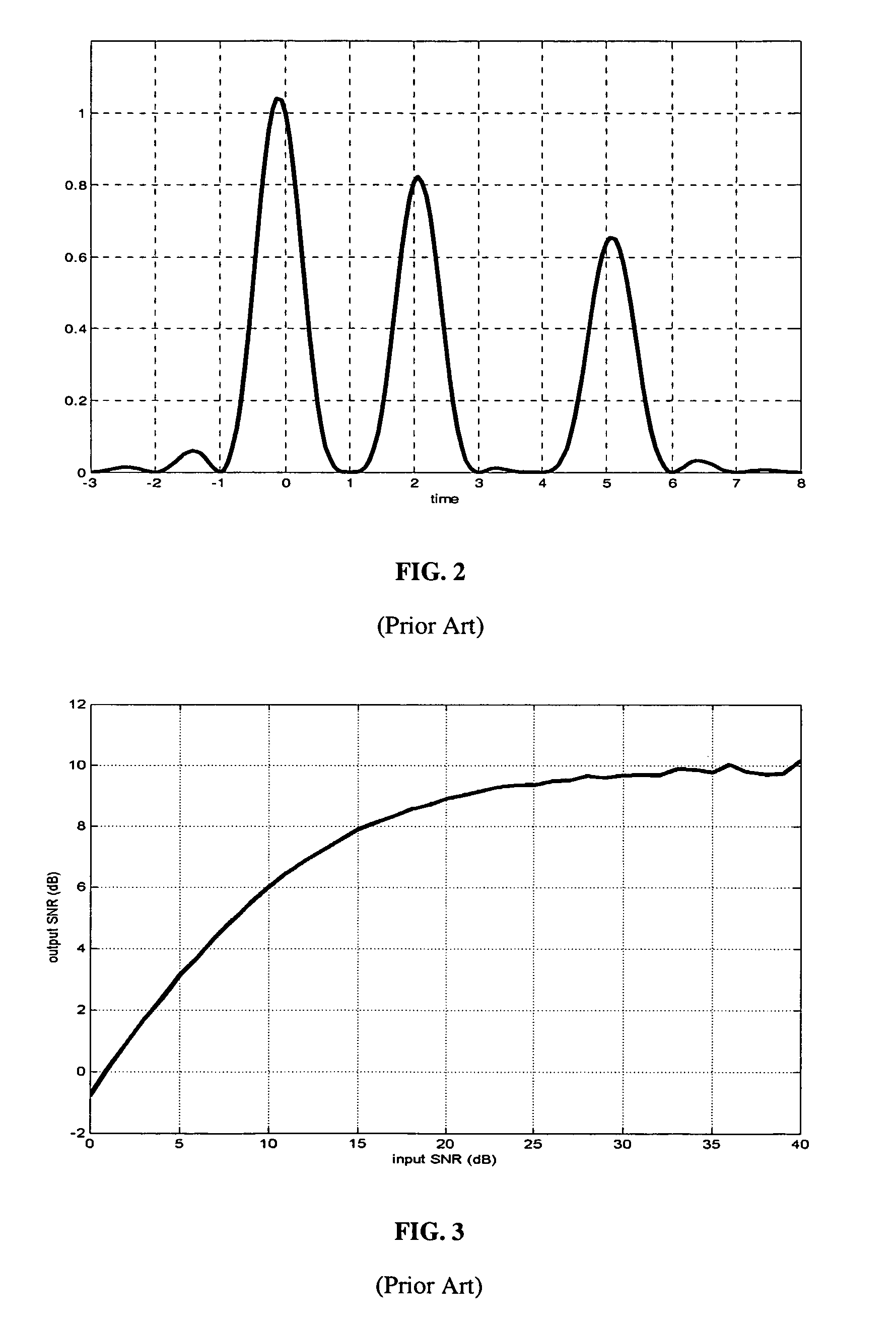LMMSE-based rake receiver with channel tap assignment
a receiver and channel tap technology, applied in the field of receiver design in communications systems, can solve the problems of reducing the output signal-to-noise ratio (snr) of the rake receiver, severely restricting the performance of the ber/fer, and limiting the capacity of, e.g., wireless cellular systems
- Summary
- Abstract
- Description
- Claims
- Application Information
AI Technical Summary
Benefits of technology
Problems solved by technology
Method used
Image
Examples
Embodiment Construction
[0049] The present invention relates to the receiver design in communications systems. In a communications system, the receiver has means of estimating the composite CIR h(t). For example, in a wireless CDMA system, h(t) can be estimated from a pilot channel. Given the channel-tap locations t0,t1, . . . ,tM−1, let h=[h0,h1, . . . ,hM−1]T=[h(t0),h(t1), . . . ,h(tM−1]T be the channel response vector. The received vector r with respect to the data symbol b can be written as
r=hb+z, (2)
where z is the noise vector. In a wireless CDMA cellular system, z can be modeled as the sum of the intracell interference and additive white Gaussian noise (AWGN), where the AWGN consists of the intercell interference and thermal noise. Consequently, the covariance matrix R of z can be written as
R=RBC+RAWGN, (3)
where RBC and R AWGN are the contributions to R from the intracell interference (the interference from the base cell, the base-cell component) and the AWGN, respectively.
[0050] The (i, j...
PUM
 Login to View More
Login to View More Abstract
Description
Claims
Application Information
 Login to View More
Login to View More - R&D
- Intellectual Property
- Life Sciences
- Materials
- Tech Scout
- Unparalleled Data Quality
- Higher Quality Content
- 60% Fewer Hallucinations
Browse by: Latest US Patents, China's latest patents, Technical Efficacy Thesaurus, Application Domain, Technology Topic, Popular Technical Reports.
© 2025 PatSnap. All rights reserved.Legal|Privacy policy|Modern Slavery Act Transparency Statement|Sitemap|About US| Contact US: help@patsnap.com



